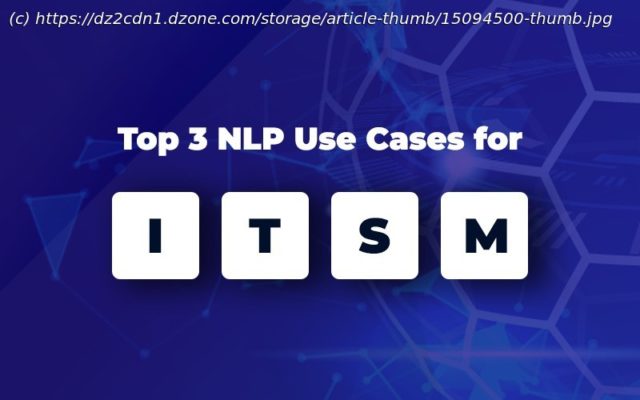How can NLP help organizations gain valuable insights from their text and free formatted data, and how can NLP benefit your IT Service Management teams?
Join the DZone community and get the full member experience. Natural Language Processing is a specialized subdomain of Machine Learning which is generally concerned with the interactions between the human and machine using a human verbal or written language. NLP helps in processing huge volumes of text which would take a significant amount of time for a human to comprehend and process otherwise. Hence a lot of organizations take advantage of NLP to gain useful insights out of their text and free formatted data. Utilizing NLP on IT Service Management (ITSM) provides a lot of benefits for an organization since they generate huge volumes of data that essentially captures the health, performance, and experience of the enterprise-critical assets. The type of data the ITSM team generally deals with is change requests, incidents, KB articles, emails, and chats. In some cases organizations also use social media channels to monitor/keep track of any issues/complaints that arise for their products. So out of all these data used in ITSM, the common thing amongst all these is that they are text data and they are all unstructured as well. Utilizing NLP for this kind of data yields good results and ITSM gains better productivity and for quicker resolution of issues. NLP helps in processing the machine-generated text and the user-generated text with the help of multiple machine learning methods/capabilities to get meaningful results from the data. The most commonly used NLP methods are: The top use cases of NLP that organizations can leverage with the help of AIOps tools for ITSM are: This is one of the most common and important use cases amongst the three use cases. NLP can be used to unearth hidden insights from the text fields of historical data and pave the way for the transformation and optimization of operations and processes. Typical data sources used for this are incidents, change requests, KB Articles, and Emails. The methods/capabilities used are clustering, keyword extraction, sentiment analysis, and custom entity recognition.






